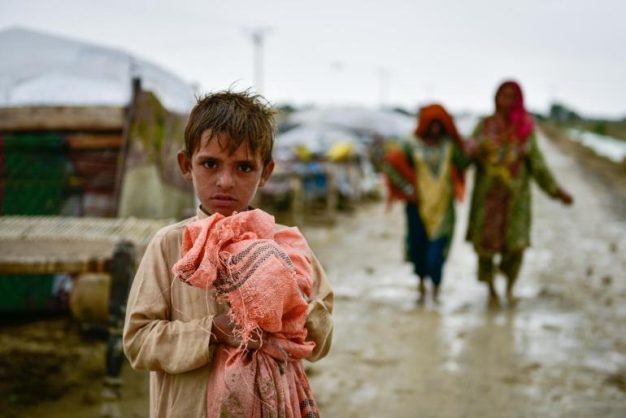
Extreme weather made over 43 million children homeless in six years
Weather-related disasters caused 43.1 million internal displacements of children in 44 countries over a six-year period – or approximately 20,000 child displacements a day, says children’s charity UNICEF.
Children Displaced in a Changing Climate is the first global analysis of the number of children driven from their homes between 2016 and 2021 due to floods, storms, droughts and wildfires, and looks at projections for the next 30 years.
China and the Philippines are among the countries identified as having recorded the highest absolute numbers of child displacements, due to their exposure to extreme weather, large child populations and progress made on early warning and evacuation capacities.
Yet relative to the size of the child population, children living in small island states, such as Dominica and Vanuatu, were most affected by storms, while children in Somalia and South Sudan were most affected by floods.
Catherine Russell, UNICEF Executive Director, said: “It is terrifying for any child when a ferocious wildfire, storm or flood barrels into their community. For those who are forced to flee, the fear and impact can be especially devastating, with worry of whether they will return home, resume school, or be forced to move again. Moving may have saved their lives, but it’s also very disruptive.
‘We need to strengthen efforts to protect children’
“As the impacts of climate change escalate, so too will climate-driven movement. We have the tools and knowledge to respond to this escalating challenge for children, but we are acting far too slowly. We need to strengthen efforts to prepare communities, protect children at risk of displacement, and support those already uprooted.”
As leaders prepare to meet at the COP28 Climate Change Summit in Dubai in November, UNICEF is urging governments, donors, development partners, and the private sector to take the following actions to protect children and young people at risk of future displacement and prepare them and their communities:
- Protect children and young people from the impacts of climate change-exacerbated disasters and displacement by ensuring that child-critical services – including education, health, nutrition, social protection and child protection services – are shock-responsive, portable and inclusive, including for those already uprooted from their homes.
- Prepare children and young people to live in a climate-changed world by improving their adaptive capacity and resilience, and enabling their participation in finding inclusive solutions.
- Prioritise children and young people – including those already uprooted from their homes – in disaster and climate action and finance, humanitarian and development policy, and investments to prepare for a future already happening.
UNICEF says that floods and storms accounted for 40.9 million – or 95 per cent – of recorded child displacements between 2016 and 2021, due in part to better reporting and more pre-emptive evacuations. Droughts meanwhile triggered more than 1.3 million internal displacements of children – with Somalia again among the most affected, while wildfires triggered 810,000 child displacements, with more than a third occurring in 2020 alone. Canada, Israel and the United States recorded the most.
Decisions to move can be forced and abrupt in the face of disaster, or as the result of pre-emptive evacuation, where lives may be saved but many children still face the dangers and challenges that come with being uprooted from their homes, often for extended periods.
UNICEF works with governments in countries most at risk to better prepare for and minimise the risk of displacement, develop and implement child-responsive disaster risk reduction climate change adaptation strategies, and design resilient and portable services to protect and reach children before, during and after disaster strikes, catering solutions to address context-specific vulnerabilities.




